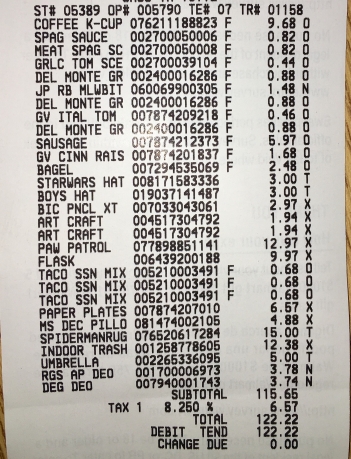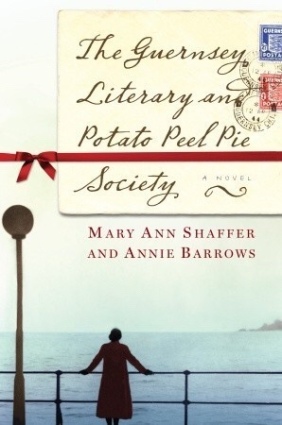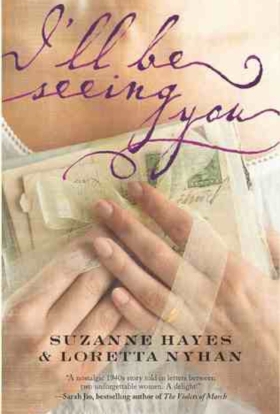Epistolary.
What? Is that even a word? It sounds like a word that would get your mouth washed out with soap if you say it in front of your mother. Is it one of those words?
Absolutely not. It’s a beautiful word that inspires beautiful writing. Epistolary writing is the act of writing in letters, diary entries, emails, or anything that would be direct contact from one individual (or character) to another one.

I love the epistolary format so much that my current WIP (work in progress) is in this style. I recently finished the third draft, and I’m on my way to the next round of revisions.
The big question is, how do you know if this format will work for you? Well, the best way to know anything in writing is to try it yourself and see. Other than that, I can offer you a few tips to help you decide…
1. Where do I even start?
When was the last time you wrote a letter or sent a detailed email? When was the last time you sent one for personal reasons instead of business?
Did you enjoy it?

If you said yes, then you’re off to a great start. If you said no, then maybe it’s time to pick up a pen and give it another try. Even if letters won’t be in your novel, you can use them to help you get through numerous writing struggles and help you brainstorm.
Write a letter to yourself from your MC (main character)
- Let him/her tell you what they think of your story/where it’s going/etc.
Write a letter to your MC from your antagonist (or vice-versa)
- They may not converse in your novel until near the end, but you can find out their goals for one another this way.
Write a letter of recommendation for one of your characters
- Find out what kind of qualities they have from someone’s view other than your own.
Write a diary entry for your MC
- Who knows what she/he will say when no one is looking. What is truly going on?
Create the news broadcast for the town
- Not many characters care about the local or even national news, but sometimes the things going on around them cause unforeseen conflict.
Create a store receipt for your MC
- This is a great way to figure out what matters when it comes to shopping, which can also give you another setting in your novel.

2. What are two ways I can use letters in my novel?
First you have to figure out if you even want letters in your book. Does the format work with your storytelling?
If so, there are two ways you can go from there…
A — A novel composed completely of letters (etc.)
- Each entry is a letter or some other form of correspondence.
- The main plot line is laced within the details of the letters.
- You can have your MC write every letter in the novel, or you can change up the point of view by using multiple letter-writers.
- Be sure to make the writer clear.
My all-time favorite epistolary novel uses this format: The Guernsey Literary and Potato Peel Pie Society by Mary Ann Shaffer and Annie Barrows. The point of view changed back and forth between several characters creating a story-line that stretches the continent.

Another novel I enjoyed in this format was I’ll be seeing you by Suzanne Hayes and Loretta Nyhan. This one was unique in that it was co-written. Each author took on the role of one of the two main characters, which offers readers a chance to catch voice and technique changes.

B — A novel that includes a few letters (etc.)
- Most chapters are written in the traditional format.
- Correspondence is every few chapters in the form of a diary entry, letter, or something.
- These entries serve a specific purpose:
- develop characterization
- provide insight to an event or circumstance
- offer something that the MC needs to move the plot forward
I recently finished a novel in this format: Dear Martin by Nic Stone. Justyce, the main character, writes a series of letter to Martin Luther King, Jr. during the course of the novel in between the main story line. This provides insight into how the actions of the story impact the main character and how he deals with everything going on in his life.

3. How would my story change if I used the epistolary format?
Have you already written a first draft, but you think it might better fit as an epistolary novel?
Don’t worry, I had that same issue. The majority of my first round of revisions was changing the format and adjusting point of view. I’m now having to consider other changes, too…
- timeline — we all consider this already, but using dates on your letters makes it imperative.
- chapters — letters tend to create their own chapters, so some authors separate their epistolary novel into parts or leave it as is.
- letter-writers — you’ll need to consider if you want a back-and-forth style, a diary style, or many different perspectives style.
- voice — we already know that each character needs their own voice, so making sure each character’s letter sounds different from one another is vital.
- importance — this works the same as a traditional novel… if it’s not moving the plot forward, then it should probably be rewritten or reconsidered.
All in all, the epistolary format isn’t for everyone, but it can be fun to try on your own (maybe a writer’s notebook experiment?). The thing is, you’ll never know until you try!
Resources
In case you want a bit more information from various sources, feel free to check these out!
- “5 Favorite Epistolary Novels” by Sarah, an academic librarian
- “7 Variations on the Epistolary Novel” by Jonathan Russell Clark
- “6 Tips for Writing an Epistolary Novel” by Tracy Marchini
Please feel free to share your thoughts on or your resources for epistolary writing in the comments!
Author Toolbox
This post is part of the #AuthorToolboxBlogHop (hosted by Raimey Gallant), which is dedicated to helping writers become stronger and more confident in their craft. Click here for more information, to continue hopping through other posts, or to join in!

Thanks learnt new word! Just seen trailer on tv. Book sounds interesting but do not think will have time to buy and read before film released.
LikeLike
I love this! You shared some great letter-writing exercise I had never really considered before. I’m going to have to try some of them out on my WIP. Thanks for sharing! 🙂
LikeLiked by 1 person
Thank you! I hope you enjoy some of the ideas when you try them out!
LikeLike
Thank you for this. While I’m not sure I could do a whole novel in this style, I do have a short story planned as a series of diary entries. I’m sure some of your suggestions will help.
LikeLiked by 1 person
Ooh! A short story in the epistolary format sounds exciting! Thanks for commenting.
LikeLiked by 1 person
My favourite epistolary novel is and remains Daddy Long Legs by Jean Webster.
But I like your idea of having your characters write letters. They’d make good blog posts on the launch tour!
LikeLiked by 1 person
Thanks for the recommendation — I’ve added it to my TBR list. The synopsis is incredibly intriguing.
Thank you for commenting! I hope your characters write some amazing letters for you. 🙂
LikeLike
Hi JJ.. I think Caraval has some epistolary elements. I didn’t know there was a term for the style. Thank you. I will definitely try the receipt exercise 🙂
LikeLiked by 1 person
Good luck!
LikeLiked by 1 person
My bit of writing was letters. Then journalling. I’ve read several books using the format and yes they were powerful. I think it takes skill to do it right though. I’ve met many a person that couldn’t write a decent letter to save their life.
Anna from elements of emaginette
LikeLiked by 1 person
Thank you for commenting! It’s sad that letter writing isn’t as prominent anymore. I still send letters to my great grandmother though, and she replies to every one!
LikeLiked by 1 person
Love the way you started the post asking is epistolary is word. I haven’t read a novel in this style in a long time, but I have certainly enjoyed them. Thanks for all the tips.
LikeLiked by 1 person
Thank you! I restarted this post about ten times before finally deciding on that beginning.
I hope the tips help!
LikeLike
I always have some random sections in a novel that come as epistolary. Most don’t make it through the first edit, but I often use it as a touchstone for a character’s personality or voice. Kudos to you taking on an entire project that is epistolary. (By the way, I love your writer notebooks. They are amazing.)
LikeLiked by 1 person
I haven’t read any novels in this format in years. (think childhood) I’ll have to give it another try. Thanks for the reminder.
LikeLiked by 1 person
Thank you for commenting! I hope you love it when you give it another try — there’s always writing a few yourself, too.
LikeLiked by 1 person
“Epistolary” is a new word to me. The last time I wrote to someone was for Christmas when I wrote thoughtful messages inside cards to a handful of people. I do enjoy it. There are times when I wish we were back in the letter writing days because I used to love it so much.
Dear Martin is one book I want to read
LikeLiked by 1 person
Even though it’s a new word, I’m glad the style isn’t new! I love writing letters, so it made sense to write a novel in that format.
I hope you try more of letter writing in the future. Thanks for commenting!
LikeLike
The last book I wrote (waiting for beta feedback) is in epistolary format, and I didn’t know it! It takes place in WWII, and the love story subplot is told through letters her fiance writes from the Pacific. I use dates as scene and chapter headings because there’s a 3-4 week delay between when he sends his letters and she receives them.
Thanks for putting a name to this method!
LikeLiked by 1 person
Sounds like fun 🙂 I’ll try it when I’m stuck for ideas.
LikeLiked by 1 person
Thanks for commenting! I hope you like it when you give it a try.
LikeLiked by 1 person
I have to admit, I’d never heard the word. What a great topic for a post. I’m going to forward it to my wife. She is huge on writing “real” letters. The idea of having my main characters write me letters is a great way to see if I really know they are.
LikeLiked by 1 person
I’m thrilled you clicked on a post when the word was unfamiliar. Thank you for sharing with your wife and gathering a few ideas yourself, too!
I also love “real” letters, and I even have a couple pen pals that I regularly write to.
I hope your characters tell you all sorts of important information!
LikeLiked by 1 person
The Guernsey Potato Peel etc. is my fave epistolary novel as well! I read it so long ago, but I still remember how absorbing it was. What a terrific idea for a post topic! 🙂
LikeLiked by 1 person
Thanks! I need to reread it and hope that the movie makes it to the U.S.
LikeLike
Loved reading your thoughts and tips about epistolary writing. I love reading epistolary fiction but had never given thought to writing any. Thanks for planting that seed!
LikeLiked by 1 person
Thank you for commenting! Epistolary is definitely fun to read. I hope the letter-writing seed takes root! Good luck!
LikeLiked by 1 person